25 Greatest Practical Effects
Who needs CGI?
King Kong (1933)

The Effect: Kong.
Practical Magic: The big hairy granddaddy of practical effects, King Kong put both fists through Hollywood in 1933 – ushering in a golden age of real backstage craftsmanship that would last all the way to the digital revolution.
Just 18 inches tall – and made out of aluminium, latex and rabbit fur – the original Kong still has a charm and a magic that could never be rebuilt in a computer.
Eternal Sunshine Of The Spotless Mind (2004)
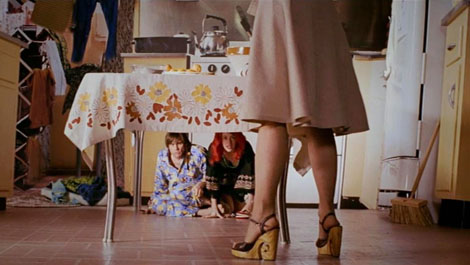
The Effect: Baby Joel.
Practical Magic: Peter Jackson’s tiny hobbits (and big wizards) in The Lord Of The Rings put the effect to more use, but Michel Gondry used it with subtlety. Using an old silent trick of ‘forced perspective’, Jim Carey looked like a tiny tot hiding under a kitchen table (when actually he was just a long way away in an ingeniously designed set).
Terminator 2: Judgement Day (1991)
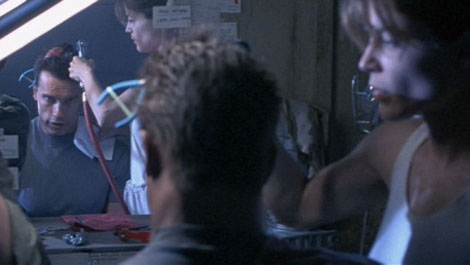
The Effect:
The head peel
Practical Magic:
Obviously Linda Hamilton didn’t cut a hole in Arnie’s head and take out his microchip (although it might explain a few things…), but the use of old-school practical effects in the scene is just as clever as the CG trickery in the rest of the film. With a model of the back Schwarzenegger’s head in the foreground, and a window standing in place of the mirror, the real Schwarzenegger plays his own reflection (and Linda’s twin sister Leslie doubles for her “reflected” hands).
Scanners (1981)
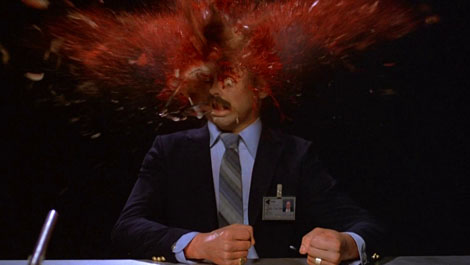
The Effect: The exploding head.
Bringing all the latest movie news, features, and reviews to your inbox
Practical Magic: How do you make a head explode? You fill a prosthetic dummy full of liver and offal from the local butcher, then you get a bloke with a shotgun to kneel down behind it and blow it to pieces.
Film it in super slow-motion and you’ve got one of the most iconic moments in body horror history.
Apollo 13 (1995)

The Effect: Weightlessness.
Practical Magic: Alfonso Cuarón had it all wrong in Gravity : instead of spending three years on the computer effects he should have followed Ron Howard’s example in Apollo 13 .
Needing Tom Hanks and Kevin Bacon to look weightless, he built the interior of the spacecraft on a ‘vomit comet’ – NASA’s KC-135 super jet that flew the actors up and down so fast they were able to experience zero gravity in 25 second bursts. Before they vomited, presumably.
127 Hours (2010)
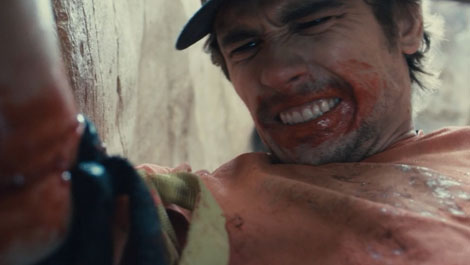
The Effect: The amputation.
Practical Magic: Let’s be honest, most people spent the first 126 hours waiting for James Franco to hack off his own arm, so Danny Boyle had to make sure it was worth it. Wanting to keep it real, Boyle and Franco shot the scene with a prosthetic arm carefully made up to mimic the bone-crunching feel of the real thing – resulting in an excruciating 20 minute take that most found hard to stomach.
2001: A Space Odyssey (1968)

The Effect: The gravity jog.
Practical Magic: One continuous shot that follows an astronaut as he jogs around a spaceship – up the walls, over the ceiling and back again. How did Kubrick do it?
He built a giant hamster wheel and rotated it around the camera – one of the most ambitious and costly solutions for a single effect ever staged. At the other end of the scale, an earlier shot of a floating pen was achieved with a sheet of a glass and a bit of sticky tape…
Jaws (1975)

The Effect: Jaws.
Practical Magic:
If anyone ever remakes Jaws (and, dear God, they better not…) chances are the shark will be drawn in a computer.
Back in 1975, Steven Spielberg had nothing but a rubbish mechanical prop that kept breaking whenever it got wet. In the film’s pivotal scene, Jaws pops his head out of the water because a diver helped push it from below – the lowest of low-tech, but still one of the most frightening moments in movie history.
Star Wars (1977)

The Effect: The Trench run.
Practical Magic: Say what you want about George Lucas’s turn to the dark side of CGI in the prequels, the practical effects in Episode IV are probably the most influential in the business. Witness the trench run – the Death Star meticulously built to scale on a line of trestle tables – and Luke’s X-Wing a carefully hand-painted model.
Independence Day (1996)
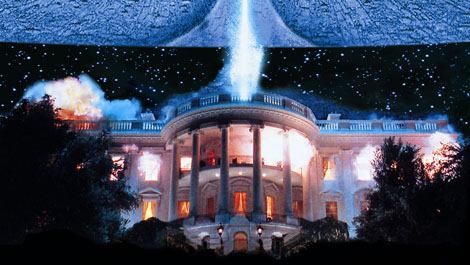
The Effect: The White House explosion.
Practical Magic: Technically, Roland Emmerich really did blow up the White House – except his was only 6ft high and 12ft wide, made out entirely out of plaster.
Cleverer still, his rolling wall of flame was made by tipping a miniature city on its side, filming it from above, and setting it on fire – making it look like the alien flame ball was really creeping up the walls.


